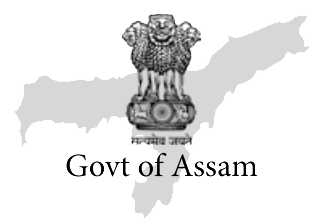It was 1998. A report in the newspaper on the discovery of a rare species of orchid in Dibru-Saikhowa National Park caught his attention. This youth from Daisajan in Tinsukia wanted to research this piece of news. He decided to visit the area where the orchid was spotted. He had a problem, though. A counter-insurgency operation launched by the Army was at its peak and the National Park was one of the theatres of that operation. He decided to take the plunge, nevertheless. A fisherman’s boat took him there, and the rest as they say is memorable. He was intercepted and taken to its camp by the insurgent group which took him for a spy of the Army. He was released thereafter once it became clear to the insurgents that he had come there for his love of orchids.
He is Khyanjeet Gogoi, now known as ‘Orchid’ among his friends, and is a teacher by profession.

He recollects another experience when he ventured into the Jeypore rainforest of Dibrugarh with academic and wildlife biologist Kashmira Kakati. “I had taken utensils to prepare our food in the forest during our journey. When I started preparing our meal, I realised that the utensil had a crack and could not be used to cook rice. We had to fall back on bamboo shoots to take care of our meal. I remember that lingering taste even now,” he told Asom Barta.
There are about 900 species of orchid in North East India. In Assam, their number is over 400. However, there are many species in the forests of Dibru-Saikhowa, Jeypore, and Kaziranga which have not yet been identified.

Out of the over 400 species identified, Khyanjeet, who had always loved nature, has thrown light on nine and given them their scientific name. (Pl see box). Besides, he has also managed to bring to the notice of the world the availability of many rare orchid species in Assam.
Much before he came to be known as Orchid Man of Assam, he used to bring home kapou flowers, littered in the fields of tea estates during Bihu celebrations, and preserve them with scant understanding of any species. Once he enrolled himself as a student of Science in his higher secondary, and then Botany, in his graduation, did his attraction towards orchid multiplied.
“When I started working on orchids, I realised to my dismay that there were very few books on the subject. I was dejected. I thought to myself, ‘why not work on this’,” he said. By now, he has published Orchids of Dibru-Saikhowa National Park and Biosphere Reserve; Wild Orchids of Tinsukia Districts of Assam; Wild Orchids of Assam, A Pictorial Guide; A Guide of Orchids – Tale of Orchids Conservation Trail. He has co-authored with Jitu Gogoi and Nitu Basumatary another book Orchids of Dhemaji District. He has also published 155 research papers since 2005.
With support from the Orchid Society of Eastern Himalayan, he has set up a herbarium of orchids of Assam and an Orchid Preservation Centre with over 750 species from the North East. Today, he is a proud member of the IUCN.
“We are not fully aware of orchids. Teachers in colleges have a lot to do on this.Orchid smuggling is another problem,” he told this reporter. Citing an example of Thailand, he informed this newsletter that orchids contribute significantly to the country’s economy and that Assam, too, shares similar geographical and ecological characteristics to take advantage of this fact. “It can lead to self-employment of many. Areas which are free of pollution can easily undertake tissue culture, and art and craft centred around orchids without much investment. What is worrisome is that despite the availability of many varieties of orchids in Assam, our market is flooded with imported ones,” he said, while pointing out to the untapped potential of discovering new species of orchids in far flung places, surveyed long back by scientists.












